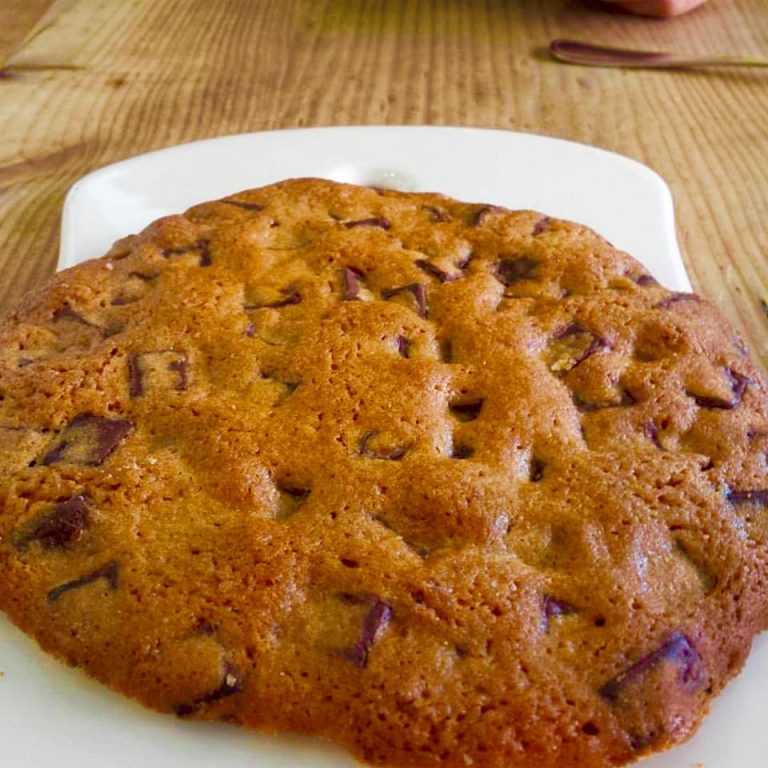
“Sugar is just as harmful as cocaine, haven’t you seen the documentary? I haven’t had any in over three years!”
“Gluten is the worst for your digestion, the only way to feel lighter is to go gluten-free!”
“Spinach isn’t that good for your muscles, a complete Popeye myth!”
“No mammal is having milk past infancy, except for humans. A healthy diet cannot include dairy!”
With the number of studies, articles, blogs, and Vlogs that are all coming out at the same time and contradicting each other, “eating healthy” has never been more complicated for the dancer, contortionist and vocalist in search of the perfect performance eating plan. New information and trends are spreading faster than translucent powder backstage and also changing the looks and contents of our shelves. How can stage performers juggle diets as easily as clubs and recite the benefits of each and every bean as confidently as Chekhov’s words?
For Alexia de Macar, performance nutritionist, who has been working with Olympians, dancers and circus artists for 13 years, “eating healthy” means eating the foods and quantities that your body needs and wants while trusting that it knows best. The daughter of Belgian parents who calls Montreal home also defines a balanced diet as one that includes a variety of foods and combines flexibility with curiosity, whether the table is set in a hotel room, backstage or under your very own roof.
For this proud Epicurean with an early interest in physical activity and true fascination for food, a career as performance nutritionist that would combine her two passions was a choice as clear as having breakfast in the morning, “instead of waiting mid-day for catering or other free food at the show’s venue, one of the most common mistakes and disservices that artists are making to their bodies.”
It was in 2006, while working on her PhD in Performance Nutrition, that Alexia started approaching science with an artistic twist: since stage artists and sport athletes have similar needs, Cirque du Soleil saw in her the perfect addition to their team as their newest sport-and-performance specialist. “I quickly realized that, in spite of their similarities as far as nutrition goes, artists are more thinking about the long run and discussing their distant future, unlike in sport where the focus usually is on the upcoming competition and the ‘right-now move.’ Either way, eating frequently remains my best advice! Whether you’re looking at losing or gaining weight, the key indicator of what needs to be done often is the frequency of one’s meals and snacks.”
To feed a stage artist the proper food, one must know and understand the physical demands of a one-man show versus a single-scene apparition in a 90-minute production. The essential concept of “length versus intensity” has a huge impact on a performer’s menu. “Just like a diver who executes 70 dives in training versus six in competition, an acrobat can easily spend two hours rehearsing a 5-minute act. Lasting long and being at your most powerful on cue are extremely different things with very distinct nutritional needs, regardless of the nature of the performance. Consequently, more important quantities of food spread throughout the day are more beneficial and, if proteins are better for the ballerina and the actor on long rehearsal days, something sweet like dates or applesauce is best for a quick promotional appearance.”

For this Belgian chocolate lover, working with artists from all across the globe is synonymous with understanding their culture and traditions. In this she can guide without judging and earn the artist’s trust when it’s time to eat. “I can’t talk to a Brazilian trapeze porter the same way that I’d approach a Mongolian dancer for instance, not only because of how different their parts are, but because they were raised, fed and trained with different values and habits. For many years, my Russians thought that training and drinking water did not mix. Meanwhile, my Japanese performers have never been on a diet high in fruits given how pricey these are back home. Menus vary from culture to culture, from one discipline to another, but the real obstacles in menu planning lie elsewhere” she concludes with an ellipsis in her wink.
Alexia then takes a bite into her scone and straightens up in her seat before deploring the endless amount of myths and false information that are being spread over the Internet by self-proclaimed experts that ultimately cause more damage and slow a performer’s progress down. “Instead of getting documented information from people in the know, too many artists are settling for quick fix-ups and so-called miracles from people who are unaware of what performance nutrition is and cannot think beyond 6-pack abs!”
“There always is a less draconian and healthier alternative to those spontaneous dietary decisions: the semi-recent demonization of sugar has cast a shadow on the fact that the glucose and carbohydrates found in fruits, cereals and whole grains are a very important energy source that all our cells and organs require. I’m also a firm believer that eating should be an enjoyable experience of various foods and tastes, not solely about meeting your body’s needs! Therefore, ‘Pleasure-foods’ like that triple chocolate muffin picked by my lead actor at breakfast, should be moderately present in every performer’s eating plan.”
Eating well and follow the rules at home and in longer, somewhat sedentary engagements is often easier, but whether we’re talking stage or stomach, “be flexible!” remains Alexia’s best touring advice. “To avoid nutritional nightmares and dietary dramas when food shopping on tour, when time is limited and your favorite brands cannot be found, go back to the basics: carbohydrates, proteins and lipids, and give your body what it needs to be at its best: if that means carbs for four consecutive important days in China, stick to rice, and if you can’t read the label on those protein bars in Moscow, get a can of salmon in order to feed your body instead of your frustration before opening night!”

The mother of two also insists on the importance of planning. She points out that artists who are researching where they’ll be staying and performing prior to their arrival always seem to leave cities with a more positive impression than colleagues who are winging it. Still, to those who are shying away from research engines and taking it a moment at a time, remember that a smoothie is both easy and quick to make, get and digest. Also for a very near effort, the recipe can be more carb-oriented, or all about proteins when a drained artist’s muscles are screaming for a soothing and feeding cool-down on that 2-show day.
While picking at the last remaining scone crumbs on her plate, the Tofu sauté expert points out that artists can’t always take the blame and that communication with their superiors, from coach to producer, is as important as that first meal of the day. “The most common misconception that I’m getting from employers is that artist are difficult to please and only seeking fancy, exotic food, when in fact. simpler has often proven to be better! A variety of textures, tastes, smells and spices is definitely appreciated by the performers, but, as I mentioned earlier, if feeding them rice for four days is the only way to assure that they’ll get all the carbs they need for an engagement, their bodies and performances will benefit of a simpler diet… In the short run! Be sure to discuss food in contract negotiations!”

The somewhat unlikely presence of eating disorders in an industry that is so physically demanding is Alexia’s farewell foodie note. Even if there are more women than men who are living with an eating disorder overall, the ratio of men has increased in the athletic and artistic communities. Whether it’s a coach, director or producer’s attitude towards both artists and food, the fact that one’s silhouette can be more influential and important than their performance in casting sessions or feeling that you didn’t make the cut because of that number on the scale, there are several factors that can contribute to the birth of an eating disorder or the lesser known Disordered Eating. “Keep an eye out for those unbalanced eating behaviours, where anxiety and an obsessive need to control every aspect surrounding mealtime. These behaviours don’t meet the official disorder’s calories consumption or purging quotas to be listed as clinical anorexia nervosa or bulimia nervosa, but are just as alarming and can lead to an eating disorder if they aren’t detected early enough.”
Alexia’s bullet points to all performers out there:
“Don’t skip breakfast, enjoy a first meal of any size upon waking up!”
“Eat frequently! Don’t wait for hunger to settle in!”
“Be flexible and organized! Plan your meals and snacks with a variety of foods with proper digestion and recuperation time for each!”
“Eating after a show will NOT make you fat!”
“Enjoy the food you’re having!”
Also By Martin Frenette:
BILLOSOPHY: When Philosophy Become’s An Artists Best Tool
Where Do Circus And Theatre Meet? A Look Into A Circus Directors Mind


Impassioned by performing arts, Martin Frenette started intensive dance training at a very young age before trading pliés and barres for ropes and somersaults at Montreal's National Circus School. He has spent a decade in Europe, performing in various productions. Circus Monti, Chamäleon Theater, Wintergarten Varieté, Cirque Bouffon, GOP Show Concepts, and the Friedrichsbau Varieté have allowed him to grow artistically and humanly. Martin has also invested time working as an artistic consultant, director, and choreographer for both circus and dance projects. He enjoys splitting his time between Europe, Canada, and the US, working on stage and creating for others. Writing has always been a big passion of his and he's thrilled to share his views on shows, the stage, and what's going on behind the scenes with other performing arts enthusiasts!
Read Full Profile© 2021 TheatreArtLife. All rights reserved.

Thank you so much for reading, but you have now reached your free article limit for this month.
Our contributors are currently writing more articles for you to enjoy.
To keep reading, all you have to do is become a subscriber and then you can read unlimited articles anytime.
Your investment will help us continue to ignite connections across the globe in live entertainment and build this community for industry professionals.